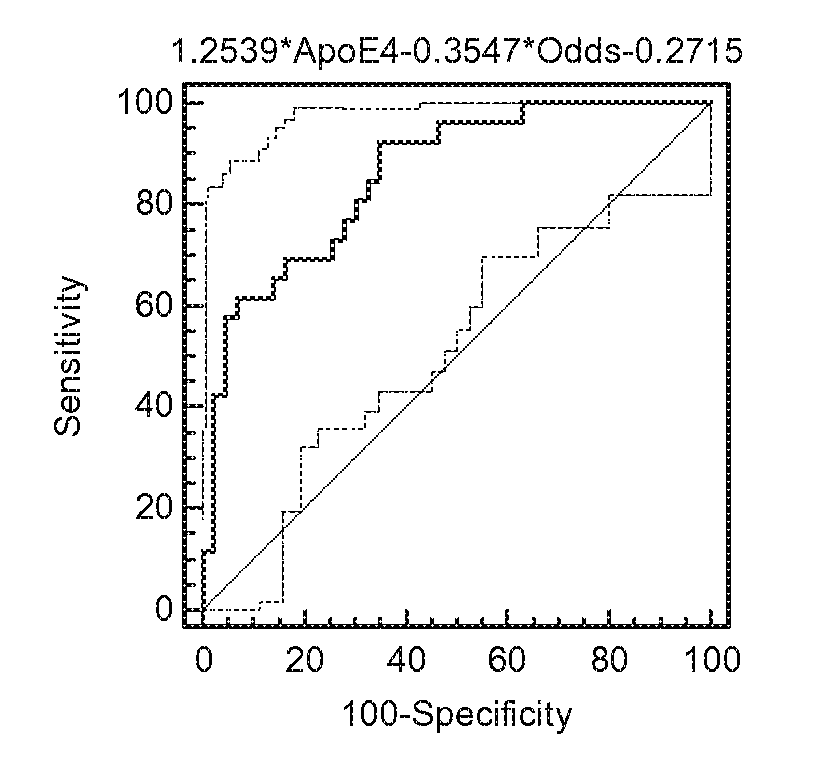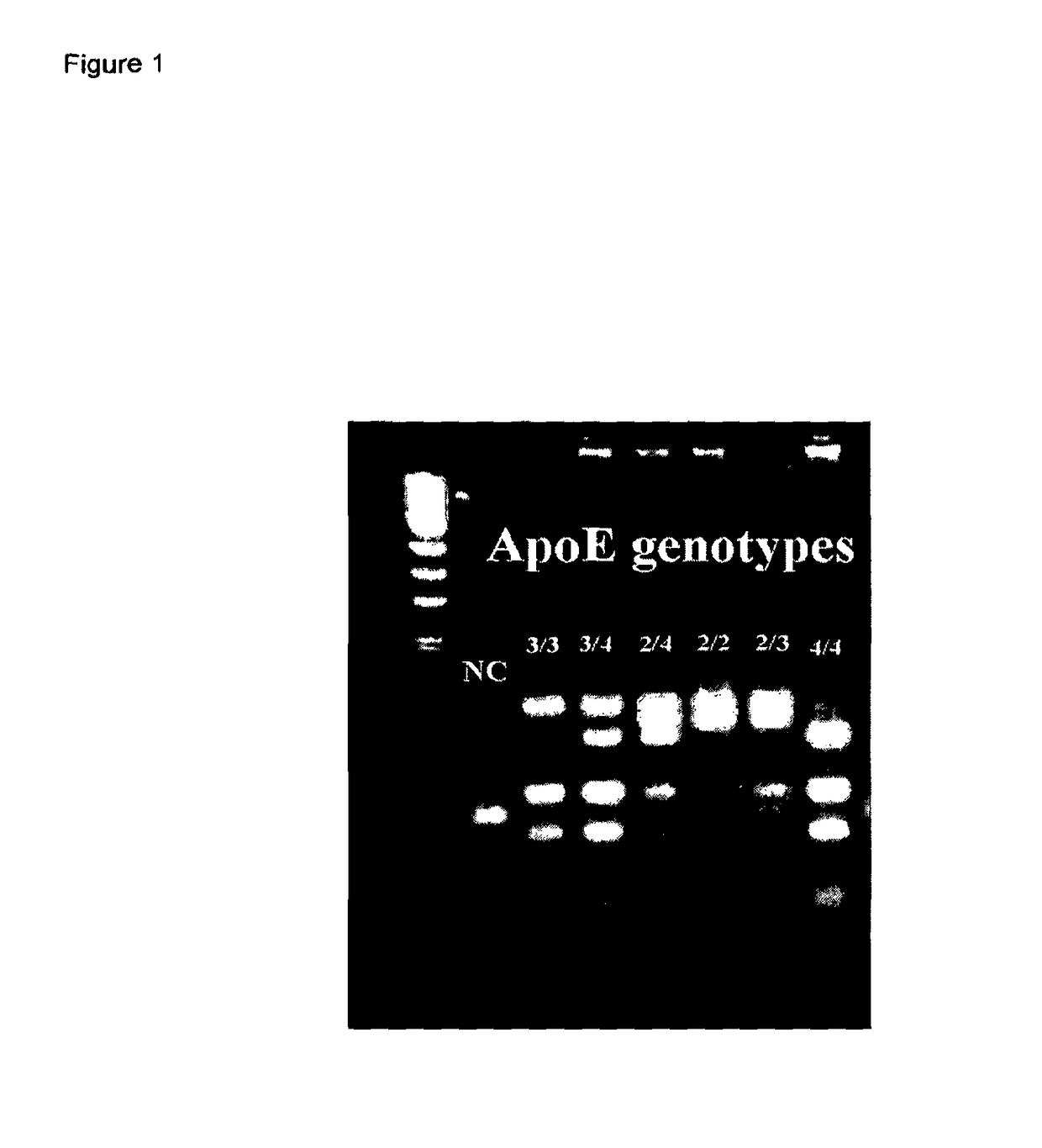Screening method
a screening method and technology of alzheimer's disease, applied in the field of clinical diagnosis of alzheimer's disease or early-stage alzheimer's disease, can solve the problems of lack of clinical diagnostic criteria, lack of clinical diagnostic tools, and inability to confidently diagnose alzheimer's disease in other than severely demented patients, so as to improve clinical reliability and usefulness of diagnostic prediction based on the combined result, and increase the number of patients
- Summary
- Abstract
- Description
- Claims
- Application Information
AI Technical Summary
Benefits of technology
Problems solved by technology
Method used
Image
Examples
example 1
[0100]The following method illustrates testing of a test population of clinically diagnosed Alzheimer's patients (AD) and patients with mild cognitive impairment (MCI), plus age-matched control subjects, using a method according to the invention.
[0101]Test Subjects
[0102]For the “clinically diagnosed” Alzheimer's cases, AD was diagnosed using the NINCDS criteria. The control subjects were accepted as control if they presented no cognitive impairment for several years running. Mild cognitive impairment (MCI) was diagnosed using standard neuropsychological criteria.
[0103]Step i)—Screening for Cell Cycle Regulatory Defect at G1 / S in Non-Neuronal Cells
[0104]The following methodology was used to assess cell cycle regulation at G1 / S in preparations of peripheral lymphocytes prepared from test subjects and control subjects.
[0105]1) Sample Collection and Lymphocyte Separation
[0106]Samples of venous blood (approx 5-10 ml) were taken from human subjects in heparinised vacutainers. Samples were...
example 2
nal Analysis
[0173]Retrospective longitudinal data (cognitive assessments and carer information) was obtained from OPTIMA regarding a subset of the patients included in the study described above. The data was obtained before the lymphocyte test of step (i) of the present method was carried out.
[0174]The cohort of patients with longitudinal follow up consists of probable AD and MCI (mild cognitive impairment patients).
[0175]Table 8 shows that probable AD patients have significantly earlier onset of memory problems than the MCI patients in this age-matched patient group. This data confirms that the cohort conforms to the expected pattern for probable AD and MCI patients.
[0176]
TABLE 8Age at disease onset (memory complaint)Table 8.1FactorsMCIProb. ADSample size2025Median survival80.0870.2866Table 8.2FactorsMCIProb. ADSurvivalSurvivalStandardSurvivalStandardtimeProportionErrorProportionError51.74——0.960.039252.472——0.920.054353.6918——0.880.065 58.05——0.840.073359.89——0.8 0.08 61.4934——0.7...
PUM
| Property | Measurement | Unit |
|---|---|---|
| G1/S phase transition | aaaaa | aaaaa |
| cell division time | aaaaa | aaaaa |
| cell cycle regulatory defect | aaaaa | aaaaa |
Abstract
Description
Claims
Application Information
 Login to View More
Login to View More - R&D
- Intellectual Property
- Life Sciences
- Materials
- Tech Scout
- Unparalleled Data Quality
- Higher Quality Content
- 60% Fewer Hallucinations
Browse by: Latest US Patents, China's latest patents, Technical Efficacy Thesaurus, Application Domain, Technology Topic, Popular Technical Reports.
© 2025 PatSnap. All rights reserved.Legal|Privacy policy|Modern Slavery Act Transparency Statement|Sitemap|About US| Contact US: help@patsnap.com



